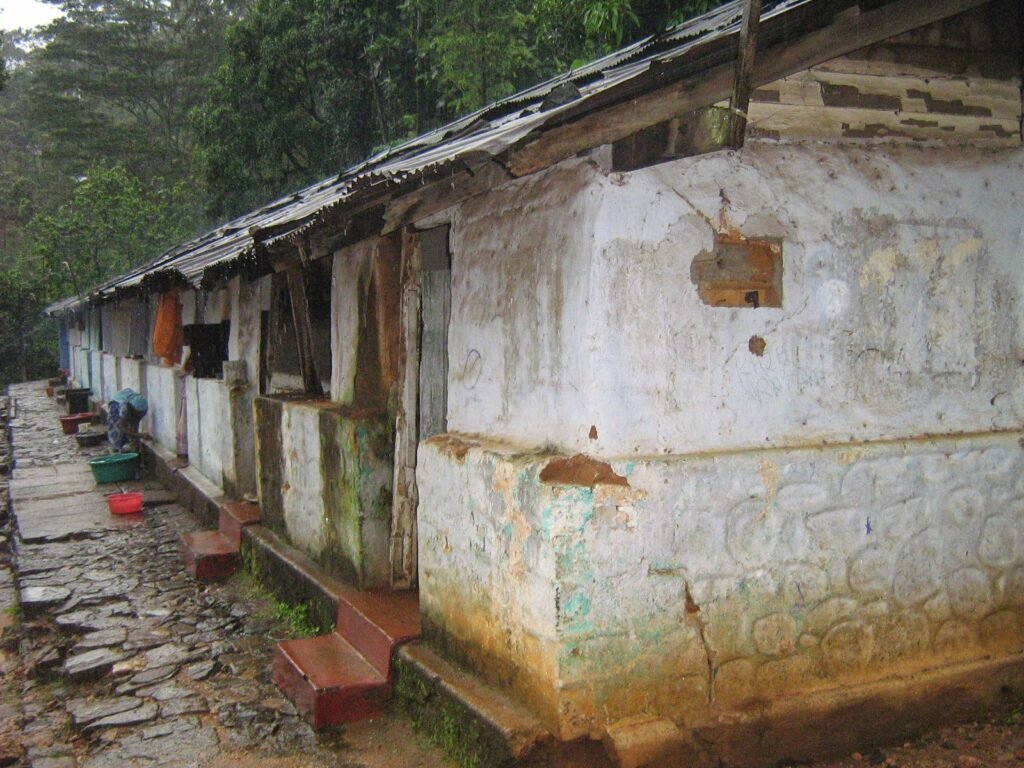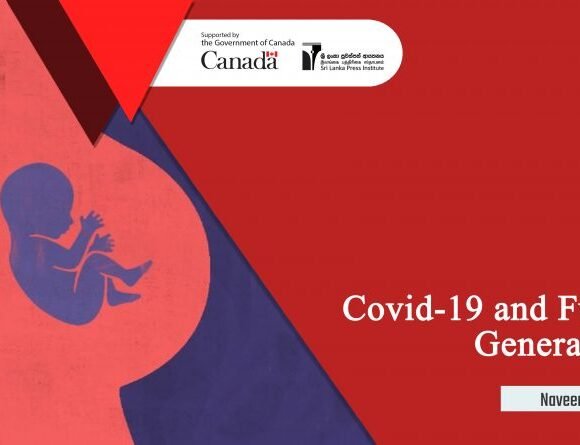
How Corona Impacts the Estate Sector
Jeeva Sathasivam
This is the time of Corona. The virus that hit the world in 2019 is still shaking the entire planet. Although it was expected that the impact of the virus would gradually subside after one year, it did not occur. The impact of the virus in the early days is now greatly feared by people who did not care much about its severity at the initial stage.
In Sri Lanka
In early March 2020, when the virus started to spread in Sri Lanka, a loose curfew was imposed island wide for over three months. Thus, a large number of infections were not identified. Further, the death toll was not that high. The total death toll from the first wave was a mere 11 people. The second wave, which began in October 2020, was also somewhat subdued in Sri Lanka.
Although the early part of 2021 was not so severe, the number of infected people crossed one hundred thousand in the period after the New Year. Meanwhile, the death toll also has surpassed one thousand. The number of deaths has increased by an average of 30 per day, and the number of infected people has crossed about 2,500 a day. During the first wave an island wide curfew clamped down. This time the country is being shut down under the pretext of travel restrictions.
Terms of Life During Covid
The main means of avoiding contraction are regular washing of hands, maintaining a distance of 1.5 meters from others, wearing a face-mask, practicing hygienic rules, yourself, and staying away from others, even at home.
Although it may be easy for those who have set up separate dwellings and are leading a comfortable living to follow such rules, this instruction is very hard to put into practice in upcountry plantation areas, especially for those living in line-house dwellings.
Here is a real story
Those identified as COVID positive were advised by the government to be quarantined in their homes which came into effect on May 17the. An upcountry person fell sick and was confirmed with Corona. He was asked to be quarantined in his line-house. This resulted in two more, including a 9-month-old baby from the same family, to catch the virus. They were hospitalized within a day or two after the infection was confirmed. Those who live nearby, live in great fear of catching the virus and worry about their lives.
In another Line House, a person was confirmed as Corona positive and was also advised to stay at the same house. The death of a 52-year-old mother of four from the same area has further frightened the people of the estate.

Co-living in Line-Houses in the Hill-Country
Line houses accommodate 5 to 7 people from a family. Some homes have more people living than this. Mothers, fathers, children, adults and young people of marriageable age, all live in a small apartment called a line-house. The line-room dwellers have to meet their daily living needs in such a small space.
In such a small space, the married couple stays where they settled, giving birth to five children and keeping the adult women indoors. A small room becomes the world of those five children.
This 120 sq.ft. area should be used by the whole family to sleep, change clothes, use their essentials for comfort and mourning.
It is stipulated internationally that an individual needs 46 square feet. However, it is unfortunate that many families living in the upcountry still have to live in an eight by eight-feet room.
How can those who live in the hill country, live in such conditions, change their basic daily habits according to Corona rules? It is impossible to follow the rules of hygiene in this intimate housing environment.


Historical Background
People who were brought to Sri Lanka as workers from India about 150 years ago were settled in the hill regions of the island. They then gave life to these forest lands. The situation is the same today.
Along with them came the disease cholera to Sri Lanka. Like the current Corona pandemic, many of those affected by Cholera died at the time. The medical system that existed in the plantation areas, still continues as it is even today with little improvement.
If so, how is a medical system temporarily developed at that time to treat people affected by cholera possible in this corona era? It is obvious that an estate worker with a corona infection will not have a medical facility for treatment at an estate hospital.
‘Free education’ for upcountry plantation people became available decades later after other communities got it. The estates were taken over by the Government in 1972 and estate education also came under the State. Today all the Estate Schools have been converted into Government Schools. Similarly, all plantation hospitals should have been converted into government hospitals. It is unfortunate that even today the plantation hospitals are managed by the estate management. In what way is it fair that the health health sector of a community is entrusted to private companies? This shows that estate people have not been absorbed into the national health system. That the manager of the estate is the one who decides whether a patient needs an ambulance or not, it’s a pity. Since the Estate Medical Assistants (EMA) are being paid by estate management, the question remains as to how such an EMA would serve the people.
There is a medical unit called the Estate & Urban Healthcare Unit under the Ministry of Health. The plantation sector hospitals should be brought under that unit by the government on a planned basis.
Upcountry representatives during the “Good Governance” regime voiced in Parliament that MBBS qualified doctors must be appointed to the plantation sector hospitals and provide them with medicines through the state medical department and bring the plantation health sector into the national health system.

The People’s Representatives and Officers They Appointed
It is now up to members of parliament representing the upcountry areas to identify locations to isolate people from the corona spread. Civil society organizations have been demanding that arrangements be made for the factories that are closed, school buildings and reading rooms in collaboration with the estate administrations for the purpose.
Need for PCR equipment in the upcountry where millions of people live, the lack of ambulances, especially in the plantation areas, has made it difficult to provide immediate medical assistance to the victims of the Covid-19. But it is disappointing to see the contribution of the people’s representatives in meeting these needs.
Relief
It is important to note that the government circular to grant corona-period relief did not include plantation workers. The government provided dry rations relief and Rs. 5,000 allowances to poor families. But the people of the upcountry plantation have not been included in the related funding activities.
This is due to the fact that the hill-country people are not fully absorbed into the public administration system. There are many obstacles to that. The Upcountry Authority was set up to address these issues to some extent. Though there is a law passed by Parliament, no attempt has been made to implement that law yet. According to the Act, the New Villages Development Authority for the plantation region is under the Ministry of Hill-country Affairs. All the vacancies in that Upcountry Authority have been filled. Who and who hold those positions, what are they doing? No details are available about them outside.
Solution
Many living in these line-houses today have reached a higher level, and despite the possibility that they could renovate these houses in which they had traditionally lived, they are still living in poor conditions within the century-old system due to the lack of land rights.
Despite efforts by upcountry politicians to bring about changes in the line-room system, it is not yet fulfilled.
To what extent have the estate trade unions, which have kept binding the people to themselves through the trade union political system, been concerned with the interests of the people? This can be witnessed by the way people live in the upcountry.
During the tenure of President Chandrika, the Ministry of Housing for the Upcountry area was established and the housing scheme for the upcountry people was discussed. If it had been implemented according to that plan, today the line-apartments in the hill-country would be no more and would have developed into villages.
As a result of the occasional regime change, the single-housing project evolved into a multi-storey housing scheme. In some places, multi-storey houses were also erected. Since that was not entirely feasible in those areas, then in 2015 an individual housing scheme was introduced. In spite of many criticisms, thousands of houses were erected during this period and handed over to the public. In addition to that foundation stone for thousands of more houses was also laid. But what will happen to the laid foundation stone remains to be seen during the current regime.
It is necessary to carry out programs that bring the living standards of these people working for the development of the Sri Lankan economy at par with the national average. It must be understood that the line settlements, which have been a hallmark of the area for many years and symbols of disgrace to the nation, are not decent habitats for the people.
It will be possible to protect them from the corona only when these line-rooms are replaced by individual houses. Only then will those in the plantation sector be able to live a decent life. Upcountry leadership must think and act to bring about a political solution to providing services to the upcountry plantation people, including healthcare.
கொரோனா ஆபத்தும் மலையக பெருந்தோட்டப்புற மக்களும்








